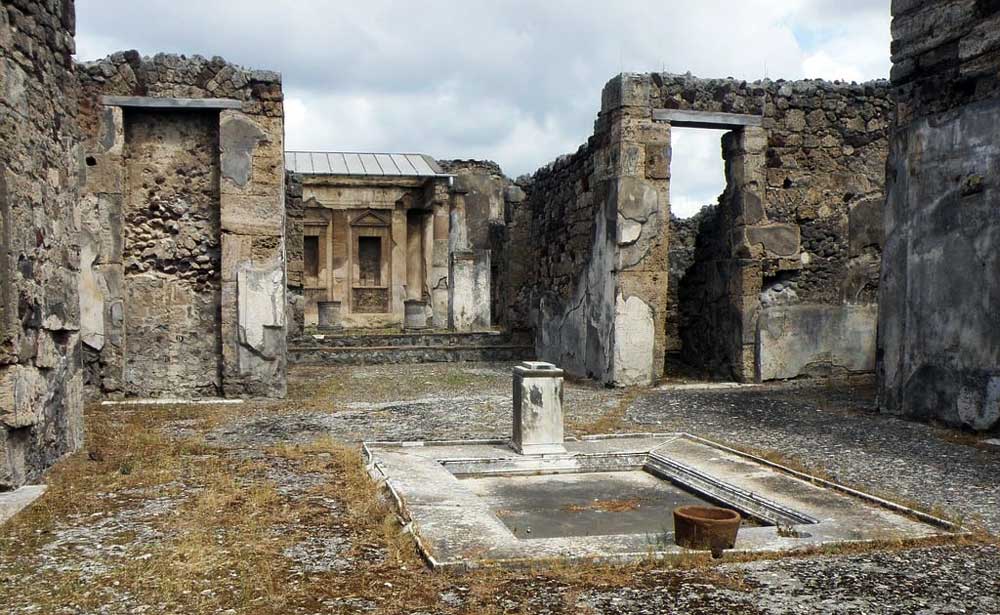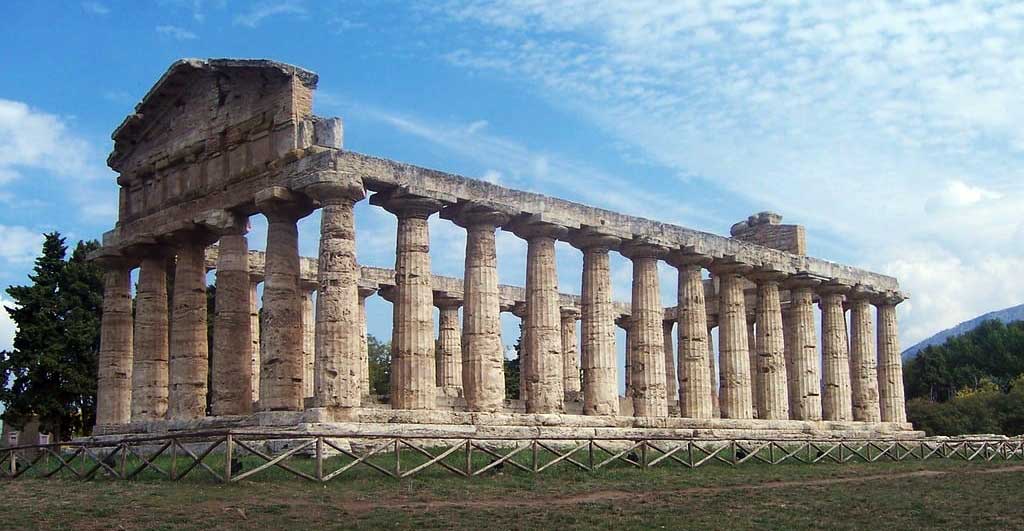Pompeii is an ancient city mostly famous for its tragic end around 2,000 years ago. It is located in Italy near a Volcano, Mount Vesuvius. The city was thriving with normal Roman culture, but in 79 AD, the volcano erupted furiously and destroyed the city.
Pompeii was lost and forgotten until it was rediscovered in the 1700s. Archeologists have excavated the city and were amazed to see that most of its buildings, roads, artifacts, and remains of people were in excellent condition.
Life in Ancient Pompeii
 Pompeii had a thriving population between 10,000 to 15,000 people. It was located near the coast of Italy and was famous for its beautiful houses, public spaces, and busy markets at that time. Moreover, the city also had temples, theaters for games, shops, bakeries, and food stalls. People of Pompeii were good farmers and produced various crops, including wheat, barley, olives, and grapes. They also spent their day in trading, craftworks, and artworks.
Pompeii had a thriving population between 10,000 to 15,000 people. It was located near the coast of Italy and was famous for its beautiful houses, public spaces, and busy markets at that time. Moreover, the city also had temples, theaters for games, shops, bakeries, and food stalls. People of Pompeii were good farmers and produced various crops, including wheat, barley, olives, and grapes. They also spent their day in trading, craftworks, and artworks.
The Eruption of Mount Vesuvius
The sudden destruction of Pompeii was caused by the eruption of the nearby Volcano called Mount Vesuvius. The eruption was very powerful and instantaneous, which sent massive Clouds of hot rocks, ashes, and gases over the city. This volcanic eruption was one of the deadliest in human history.
The eruption continued for days, which caused a buildup of ashes in the city. People couldn’t leave the city and were buried in the ashes. Pompeii was buried under 20 feet of volcanic ash, which buried most of the city’s structures. The thick layer of volcanic ash also played an important role in preserving the city’s structures and artifacts in good condition.
Discovery of Pompeii

The city of Pompeii was covered with ashes immediately after the volcanic eruption. Over the coming centuries, dust and sand kept showering over the city and totally buried it. People kept living near the ancient ruins of the city, but didn’t notice its presence.
The discovery of Pompeii was accidental, which occurred during the digging of a well and the construction of a palace by workers in the 1700s. They uncovered the various structures, buildings, and objects. This discovery caught the attention of the authorities, and its formal archeological digging took place in 1748 AD.
Uncovering the ancient city revealed the homes, shops, streets, and public buildings that were still intact. The walls inside Pompeii were colorful, and detailed paintings were drawn on them. These paintings tell the story of daily life in the city.
One of the important archaeological discoveries was plaster casts of people and animals. When hot ash from the volcanic eruption showered, it also solidified the bodies of people and animals. After some time, the bodies decayed and left empty spaces in the hardened layers of ash. Archeologists filled these spaces with plaster to recreate the life-like models of the bodies.
Why Pompeii is Important
 Pompeii is one of the most important archaeological sites in the history of humans. It provides us with a window to look into the ancient life of the Romans. Pompeii is very unique, because it was quickly frozen under volcanic ash and remained preserved for thousands of years. Unlike other ancient cities, which were either destroyed or changed over time. Studying Pompeii helps us understand how natural disasters could impact cities and people. It also reminds the Power and importance of nature.
Pompeii is one of the most important archaeological sites in the history of humans. It provides us with a window to look into the ancient life of the Romans. Pompeii is very unique, because it was quickly frozen under volcanic ash and remained preserved for thousands of years. Unlike other ancient cities, which were either destroyed or changed over time. Studying Pompeii helps us understand how natural disasters could impact cities and people. It also reminds the Power and importance of nature.
Fun Facts
- The eruption of Mount Vesuvius not only destroyed Pompeii but also destroyed nearby settlements, including Herculaneum, a less populated ancient city.
- People of Pompeii often kept pets such as dogs, cats, and birds. One of the famous plaster of a pet dog was found, in which a dog in a chained position can be seen.
- Loaves of actual bread were discovered inside homes and bakeries of Pompeii. Some loaves were better preserved, which also showed bakery stamps on them.






